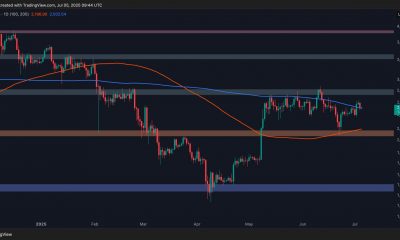Commodities
Brent crude oil prices: the calm before the storm

Last month the country supplied to foreign markets about as much as the year before. However, soon experts predict a significant increase in Brent crude oil prices.
A representative of Saudi Arabia, which is a key player in the global oil market, said in a conversation with Bloomberg that Riyadh kept oil exports in December 2022 at a stable level, continuing to meet its obligations under OPEC +. The country exported 7.21 million bpd, a figure that remained at November levels, an anonymous kingdom official said.
OPEC+ is out of politics. Brent crude oil spot price rises
Bloomberg’s own tanker data shows almost similar figures for exports: 7.25 million bpd. At the same time, oil production remains slightly below the OPEC+ target of 10.48 million bpd.
It is worth noting that the Organization of the Petroleum Exporting Countries (OPEC) and its partners announced significant supply cuts in late 2022 to stabilize oil markets amid worsening economic conditions.
Although the decision initially drew criticism from Washington, the restrictions helped to balance prices amid fears of a U.S. recession and an uneven economic recovery in China, Bloomberg noted. In the first trading days of this year, oil prices showed a further decline. So, on January 4, Brent crude oil spot prices fell by 4%: below $79 per barrel.
A group consisting of representatives of key countries of the OPEC+ alliance is to meet on February 1, 2023 to monitor the current market situation. Saudi Arabia’s Energy Minister Prince Abdulaziz bin Salman said the alliance would remain “proactive” in keeping the crude market stable.
With this state of affairs, Saudi Arabia and other OPEC+ members will be able to increase their oil revenues very noticeably, even without an increase in exports.
Earlier we reported that Swiss analysts forecast $110 per barrel of oil.
Commodities
Oil prices rise; U.S. crude inventories plunge, Russia-Ukraine truce eyed
Commodities
India’s Reliance to stop buying Venezuelan oil over US tariffs, sources say
Commodities
Oil prices climb on Venezuela supply worries

 Forex3 years ago
Forex3 years agoForex Today: the dollar is gaining strength amid gloomy sentiment at the start of the Fed’s week

 Forex3 years ago
Forex3 years agoUnbiased review of Pocket Option broker

 Forex3 years ago
Forex3 years agoDollar to pound sterling exchange rate today: Pound plummeted to its lowest since 1985

 Forex3 years ago
Forex3 years agoHow is the Australian dollar doing today?

 Cryptocurrency3 years ago
Cryptocurrency3 years agoWhat happened in the crypto market – current events today

 World3 years ago
World3 years agoWhy are modern video games an art form?

 Commodities3 years ago
Commodities3 years agoCopper continues to fall in price on expectations of lower demand in China

 Economy3 years ago
Economy3 years agoCrude oil tankers double in price due to EU anti-Russian sanctions





























